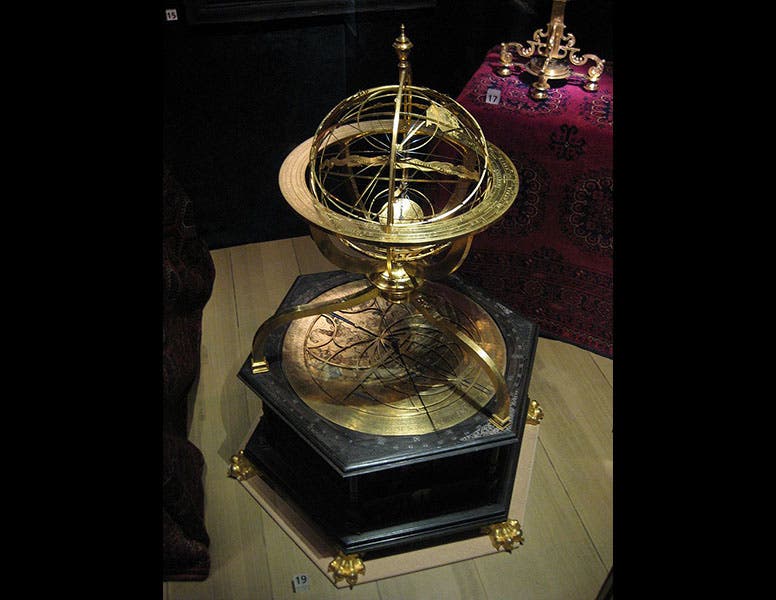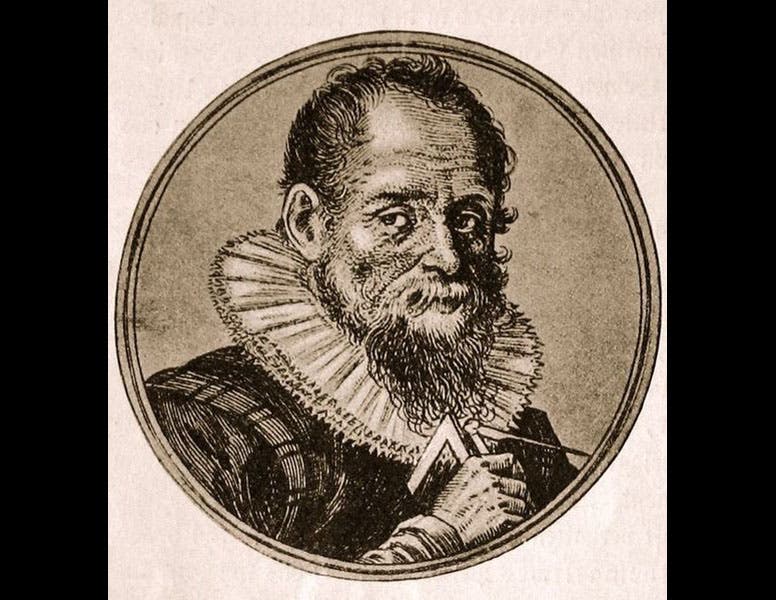Scientist of the Day - Joost Bürgi
Joost Bürgi, a Swiss-born clockmaker and mathematician, was born Feb. 28, 1552. In 1579, Bürgi entered the service of Wilhelm IV, Landgrave of Hesse-Cassel in central Germany. Wilhelm was a learned patron, maintaining an astronomical observatory at Cassel where he himself often observed the stars and planets, and Bürgi was hired to repair existing instruments and build new ones, for which he was handsomely paid. He constructed a number of clocks, some of which survive at museums in Vienna, Kassel, and Dresden; the astronomical clock above is in Stockholm (first image). In clock-making circles, Burgi is renowned for inventing the cross-beat escapement. The escapement is the device that regulates the beat of the clock, and the verge and foliot escapements of the late Renaissance were not especially accurate, so a clockmaker was lucky if his clock was accurate to within twenty or thirty minutes a day. Bürgi's ingenious escapement was twenty times as accurate, so his clocks lost or gained only a minute or two per day. This was the best clockmakers would do until the pendulum regulator was introduced in the 1650s. The second clock above (third image), built by Bürgi, has a cross-beat escapement and is now in Dresden.
Like many late Renaissance artisans, Bürgi was unlettered and did not read or write Latin, which was not a handicap in the world of instrument makers but would be a severe shortcoming for an academic. It is surprising then that Bürgi was also quite adept at mathematics, which is usually a scholarly discipline, although clearly it does not have to be so. Bürgi was one of the inventors and/or developers of a technique known as prosthaphaeresis, which is a moderately scary word until one learns that it just means “addition-subtraction” in Greek. Renaissance astronomers often had to solve problems in spherical trigonometry, where expressions like sin A • sin B are common. Multiplying two sines together is a cumbersome business, especially if you have to calculate several hundred such products. Bürgi discovered two formulas that allow the products of two sines or two cosines to be written as a series of additions and subtractions. So, for example, sin A • sin B = cos (A - B) - cos (A + B), divided by two. This was a great boon to astronomers such as Wilhelm IV and the great Dane Tycho Brahe, who was quite enthusiastic about prosthaphaeresis.
Bürgi moved to Prague in 1604 to work for Holy Roman Emperor Rudolf II, where he became great friends with the Imperial mathematician, Johannes Kepler. It is from Kepler that we learn that Bürgi also invented logarithms, independently of the usually credited inventor, John Napier. After 1620, widespread use of logarithms would make prosthaphaeresis unnecessary (two sines may be multiplied by adding their logarithms), so in a sense, by inventing logarithms, Burgi contributed to the demise of his own prosthaphaeresis equations.
After Kepler’s death, Bürgi, now a wealthy man, returned to Cassel, where he died in 1632 at the age of 81. That he had a sense of humor is attested by a mechanical doodlebug that he built for Wilhelm IV and which is now in the State Museum in Kassel; we could find nothing further about it, which is a pity (fourth image).
Dr. William B. Ashworth, Jr., Consultant for the History of Science, Linda Hall Library and Associate Professor, Department of History, University of Missouri-Kansas City. Comments or corrections are welcome; please direct to ashworthw@umkc.edu.










